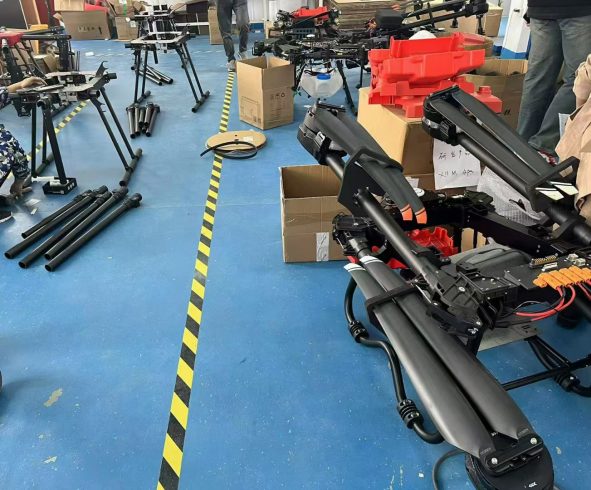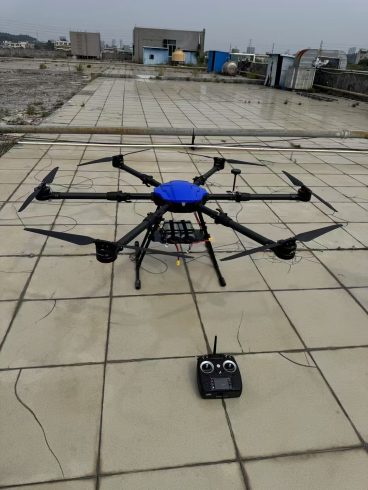![图片[1]-Drone Spraying in Hilly Terrain: Overcoming Challenges for Precision Agriculture-msoen](https://www.msoen.com/wp-content/uploads/2025/04/54487bc6d4215007-768x1024.jpg)
Farming in hilly or mountainous regions presents unique challenges—uneven slopes, fragmented plots, and limited access to machinery. Traditional ground-based spraying equipment struggles with these conditions, often leading to uneven chemical application, soil erosion, and safety risks. Enter agricultural spraying drones: agile, adaptable, and capable of revolutionizing crop management in difficult terrains. This article explores how drone technology addresses the complexities of hilly terrain, offering farmers a safer, more efficient solution.
Why Hilly Terrain Demands Specialized Spraying Solutions
Hilly landscapes are inherently challenging for agriculture:
- Sloped Surfaces: Gravity causes liquids to pool at lower elevations, creating uneven coverage.
- Inaccessible Areas: Steep inclines and rocky outcrops limit tractor or manual spraying.
- Microclimates: Variations in elevation affect wind patterns, humidity, and pest behavior.
- Soil Erosion Risk: Over-spraying or improper chemical use can destabilize fragile slopes.
Drones mitigate these issues by delivering precise, targeted applications from the air.
Key Challenges of Drone Spraying in Hilly Areas
- Navigating Unpredictable Wind Currents
Slopes and valleys create turbulent airflow, destabilizing drones and disrupting spray patterns. - Maintaining Consistent Spray Coverage
Uneven terrain risks under-dosing uphill areas or over-saturating downhill zones. - Battery Life and Payload Limitations
Frequent ascents and descents drain battery power faster, reducing operational time. - Obstacle Avoidance
Trees, rocks, and sudden elevation changes require advanced sensing technology.
How Modern Drones Tackle Hilly Terrain
- Advanced Stabilization Systems
- Gyroscopes and IMUs: Counteract wind gusts to maintain steady flight.
- Terrain Follow Mode: Automatically adjusts altitude to match slope contours, ensuring consistent spray height.
- Precision Spraying Technology
- Variable Rate Control: Adjusts droplet size and flow based on slope angle and vegetation density.
- 3D Mapping: LiDAR and multispectral cameras generate elevation maps to optimize flight paths.
- Obstacle Detection and Avoidance
- 360° Sensors: Detect and navigate around obstacles in real time.
- AI-Powered Route Planning: Algorithms plot collision-free paths while maximizing coverage.
- Extended Endurance Designs
- Hybrid Power Systems: Gas-electric combos for longer flights.
- Quick-Swap Batteries: Minimize downtime during large-area operations.
Benefits of Drone Spraying in Sloped Fields
- Uniform Coverage: Drones apply chemicals evenly across slopes, reducing waste and runoff.
- Safety: Eliminate risks of machinery rollovers or manual spraying on steep grades.
- Eco-Friendly: Targeted applications protect soil and water sources from contamination.
- Cost Savings: Reduce fuel, labor, and chemical costs compared to traditional methods.
- Data Insights: Post-spray analytics highlight areas needing re-treatment or soil conservation.
Choosing the Right Drone for Hilly Terrain
Consider these features:
- Agility: Multi-rotor drones (6–8 propellers) excel in tight spaces and steep angles.
- Payload Capacity: 10–20L tanks balance coverage and flight time for mid-sized farms.
- Wind Resistance: Look for drones rated for ≥15 mph winds.
- Autonomy: GPS waypoint planning and return-to-home functions enhance reliability.
Case Study: Success in Sloped Vineyards
A vineyard in Italy’s Apennine Mountains adopted drone spraying to manage its 50-acre terraced slopes. Using drones equipped with terrain-following tech, the farm achieved:
- 30% reduction in pesticide use.
- 20% faster spraying cycles.
- Zero soil compaction or vine damage.
Future Innovations for Mountainous Farming
- AI-Driven Wind Adaptation: Real-time adjustments to spray parameters during gusts.
- Swarm Technology: Teams of drones collaborating to cover vast, complex terrains.
- Solar-Charging Drones: Extended flight times for remote areas without power access.
- Seed-Planting Integration: Drones that spray and reseed eroded slopes simultaneously.
Conclusion
Drone spraying in hilly terrain is no longer a futuristic concept—it’s a practical, scalable solution for modern agriculture. By combining precision technology, adaptability, and environmental stewardship, drones empower farmers to cultivate slopes safely and efficiently. While challenges like wind and battery life persist, ongoing advancements in AI, sensing, and energy systems promise even greater reliability.
For farmers battling the complexities of mountainous landscapes, investing in a robust agricultural drone is not just a smart choice—it’s a critical step toward sustainable, high-yield farming.











暂无评论内容